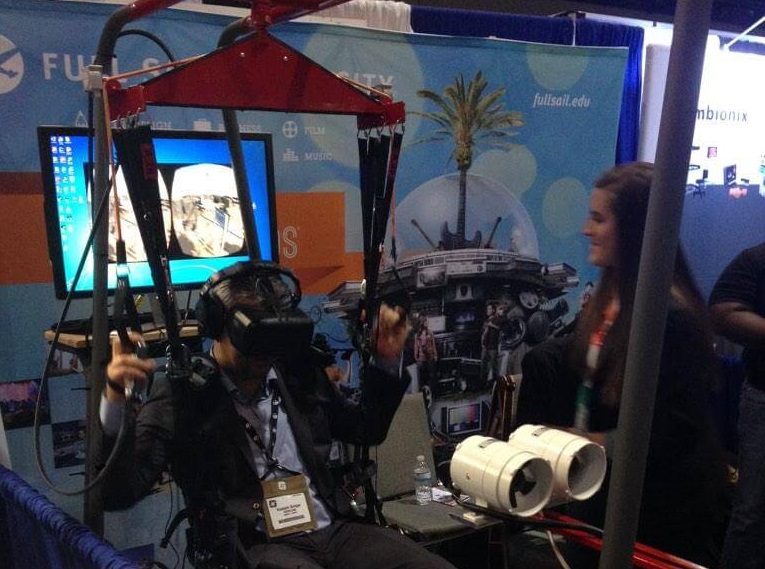Motion Capture Suits are on the Rise
In addition to training simulations, there were a few companies that were showing their advances in motion capture wearables at I/ITSEC 2014.
OptiTrack
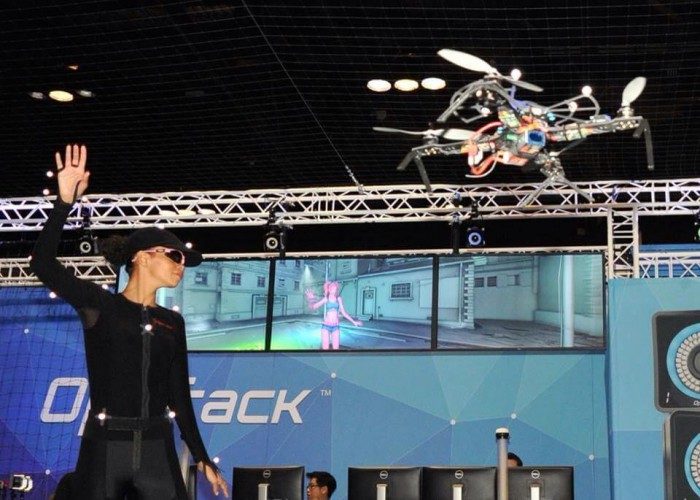
Optitrack, well known in home simulation circles for their TrackIR products, had put together a collection of high-tech clothing options complete with integrated sensors that could track the full body motion. Their line is extensive – from footwear to velcro beanies (designed for easy affixing of tracking markers), it’ll be interesting if 6DOF (degrees of freedom) rigs such as those pictured above might make a move into the commercial / home sector – perhaps for those VR enthusiasts particularly flush with cash.
The 3DSuit by Inertial Labs
Another company called Inertial Labs created full-body, wireless Inertial Motion Capture System that was seen at the conference which can be used in Virtual Reality, Movement Science, Military Training, Biomechanics, Rehabilitation, R&D and Education. Their 3DSuit suite is described as “[an] affordable, full-body, camera-less, wireless Inertial Motion Capture System”. The specifications give some clue as to the suit’s capabilities:
- 15 or 18 orientation sensors
- Waterproof (option)
- 1 deg Heading, Pitch & Roll accuracy
- 1% positioning accuracy (from covered distance)
- ±2g or ±16g accelerometers range
- ±1200 deg/sec or ±2000 deg/sec gyros
- WiFi interface
It’s an interesting approach. Giving startups with minimal budgets and physical space the ability to capture human motion without the need for large and expensive dedicated, camera based MoCap rigs is something we’re likely to see a lot more of as appetites for this sort of animation data grows with the popularity of virtual reality.
InterSense Motion-trackers
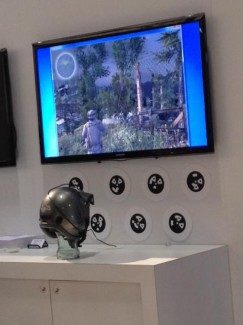
Visual positional tracking and AR systems using fiducial markers were prevalent at I/ITSEC 2014. In addition to Design Interactive’s Mixed Reality Simulation, another project at the event had similar markings placed on a wall. This system was developed by electronics giant Thales. Hard details on the system are at present scant, but an image of their setup was posted on Twitter offering a glimpse into what it looks like. The company claims that their integrated Navchip is the smallest of its kind in the world:
InterSense line of products include ultra-miniature, low-power sensors and flexible software and the groundbreaking NavChip, the world’s smallest IMU. These solutions are used worldwide to deploy high performance tracking, navigation, visualization and stabilization applications that save lives, improve productivity and conserve resources.
What about locomotion?
Companies are still attempting to figure how people are going to walk around in virtual spaces. Oculus specifically states that their system will initially be a “sitting experience,” but that doesn’t stop a human’s desire to get up and walk around.
The Omnifinity 360⁰ treadmill was showcased at I/ITSEC this year giving people the ability to physically venture further into VR. Natural, instinctive movement, is in any direction is enabled with the device’s integration of a series of rollers surrounding the user. As users walk, the rollers compensate for forward movement by spinning along with the foot’s movements. The upshot is, you’re able to don your VR headset and wander freely around the virtual space in any direction.
Head Mounted Displays at I/ITSEC 2014
According to one Redditor by the name of CubicleNinjas-Josh, there were approximately 30 Oculus Rift headsets at I/ITSEC 2014, meaning that they were the predominant VR headset by some margin this year. However, there were a couple of proprietary head mounted displays that surfaced at the event.
Lockheed Martin’s Wearable ‘HD’ HMD
As their websites states, “Lockheed Martin’s wireless devices and HD virtual reality devices use commercial-off-the-shelf (COTS) tablets that can be inserted to provide the visual display on the headset. Inside the headset, Fresnel lenses provide an ultra-wide field of view for exceptional fidelity and a more immersive virtual reality environment.”
Their HMD takes the route that the Samsung Gear VR is taking in that it is completely wirelessly. Lockheed Martin is also advancing augmented reality (AR) technology as a part of the Office of Naval Research’s Augmented Immersive Team Training (AITT) program as well.
See also: Overview of Positional Tracking Technologies for Virtual Reality
The Daqri AR Helmet
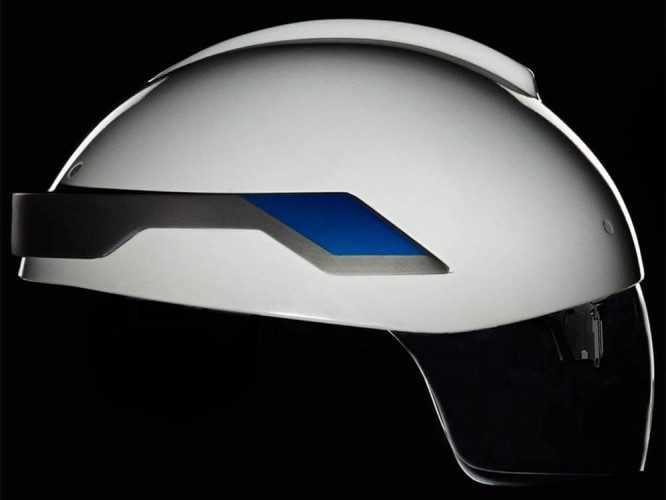
This was one of the more exciting items that surfaced at the I/ITSEC 2014 conference. It’s an augmented reality headset that would fit well in areas of construction and not just military. They are a Los Angeles based company whose work has become more visible recently as people’s interest in augmented reality technology grows.
Daqri has integrated a custom object recognition and tracking system called Intellitrack™ that’s able to recognize certain types of equipment making it easier to train individuals to work in industrial environments. The helmet has built in 360-degree sensors and cameras that help to gain precise 3-dimensional understanding of the work area as well. Additional details about the AR headset can be seen below:
Last but not least, let’s talk about Oculus
Oculus had a booth at the I/ITSEC conference this year and were demoing a couple of experiences. It was a little bit surprising to see Oculus have a presence at a military influenced event since their was no official mention of their appearance on the Oculus events website and also because Palmer Luckey has been quoted in a VRChat discussion session that Oculus would not create a more rugged version of the Rift for the military. He did go on to say though that “he loves the military,” but that it would be a huge engineering effort to develop something suitable for the market.
See also: New Bits: Palmer Luckey Joins Community in VR Chat for Informal 2 Hour Q&A
Oculus confirmed that their booth was showcasing Assetto Corsa with an integrated gaming wheel and Digital Combat Simulator (DCS). From the looks of it, they had two lines and the DCS demo was mostly being used to demo to military personnel. As one Redditor commented, Oculus was not demoing Crescent Bay behind closed doors at the event, at least as far as anyone could make out.
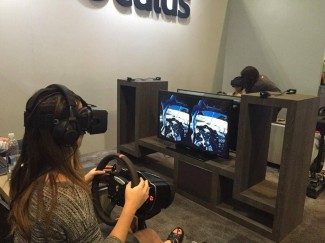
Redditor CubicleNinjas-Josh said that Oculus did however have a couple of GearVRs on hand for demonstration, but they were under a table charging for a lot of the time.
Virtual reality has been prevalent in military applications for decades now, so its no surprise that I/ITSEC showed it’s fair share of both VR and AR tech. But, with the resurgence of mainstream virtual reality, lead by Oculus’ Rift series of headsets, perhaps the days of proprietary devices costing 100s of 1000s of dollars are over.

